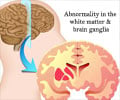New insights into the mechanism of neonatal seizures, which have features very different from seizures in older children and adults has been provided in a study led by MassGeneral Hospital for Children (MGHfC) investigators.
In their report in the Sept. 10 issue of Neuron, the researchers describe finding how neurons in different parts of the brains of newborn mammals respond differently to the neurotransmitter GABA, an observation that may explain why seizure activity in the neonatal brain often does not produce visible convulsions and why the common antiseizure drug phenobarbital can exacerbate the invisible nature of neonatal seizures."The incidence of seizures is higher in the newborn period than at any other stage of life," says Kevin Staley, MD, MGHfC chief of Neurology, senior author of the Neuron paper. "This is a time of transition when brain cells begin to switch the way they respond to the neurotransmitter GABA, which increases the activity of immature brain cells but decreases the activity of mature cells. Many of our most powerful seizure medicines work by enhancing the action of GABA, but this treatment may backfire for brain cells that have not yet made that transition."
GABA acts by mediating the flow of chloride ions into and out of neurons, and previous research has shown that neurons in structures deep within the developing mammalian brain change the expression of proteins that pump ions in or out of cells at an earlier stage than do neurons in the neocortex, the outer part of the brain that matures last and where seizures originate. The current study was designed to investigate whether the different expression of chloride pumps in specific regions of the brain might explain why newborns often have seizures not accompanied by convulsions.
The researchers first confirmed in newborn mice that chloride levels in deep-brain structures like the thalamus are much lower than cortical levels, a difference that decreases as the animals mature and cortical chloride levels drop. They then showed that GABA inhibits the activity of thalamic neurons but stimulates cortical neurons in neonatal rats, a difference that was enhanced by the induction of seizures.
Treatment with phenobarbital suppressed seizure activity in subcortical structures but not in the neocortex. That finding could explain the suppression of convulsions, which require the passage of seizure signals from the cortex through subcortical structures and out to the muscles, while a cortical seizure persists. Adding the diuretic bumetanide, which blocks the chloride pump responsible for immature neurons' excitatory response to GABA, to phenobarbital treatment successfully suppressed seizure activity in both cortical and subcortical regions.
"Our study provides a logical mechanism for the clinical invisibility of many neonatal seizures, information that may help determine the best way to monitor newborns with brain injuries for seizures and select the best strategies for anticonvulsant treatment," Staley explains. "For example, by blocking the protein responsible for immature brain cells' excitatory response to GABA, bumetanide essentially converts that immature response to a mature response and allows antiseizure medicines to work properly. We are excited to be participating in a trial of bumetanide as an adjunctive treatment of neonatal seizures currently being carried out in collaboration with colleagues at Childrens Hospital Boston and Brigham and Women's Hospital."
Advertisement
Source-Eurekalert
RAS














